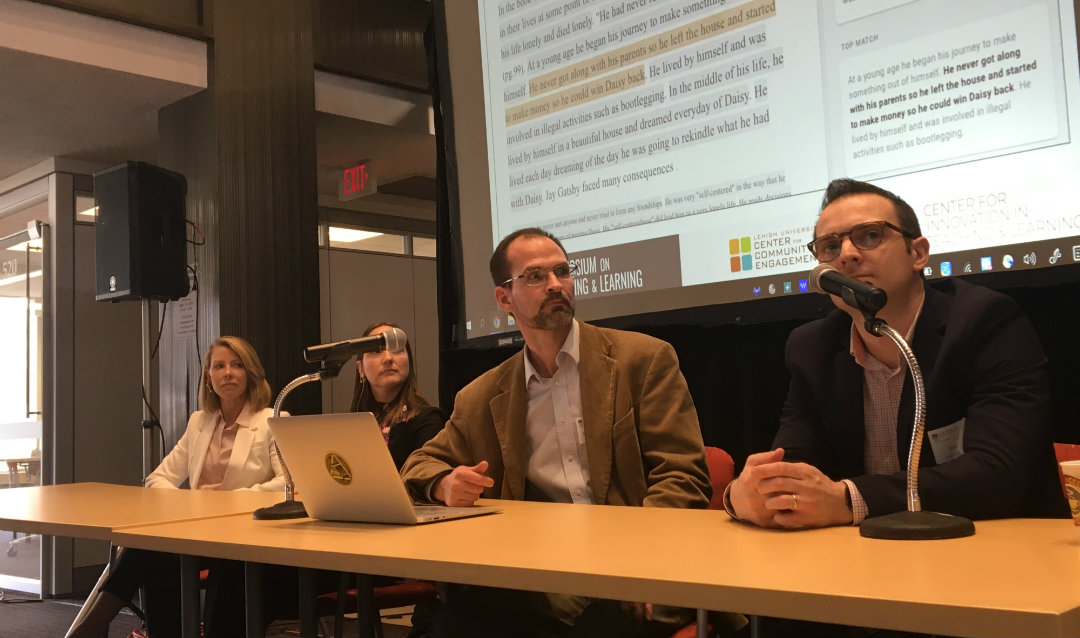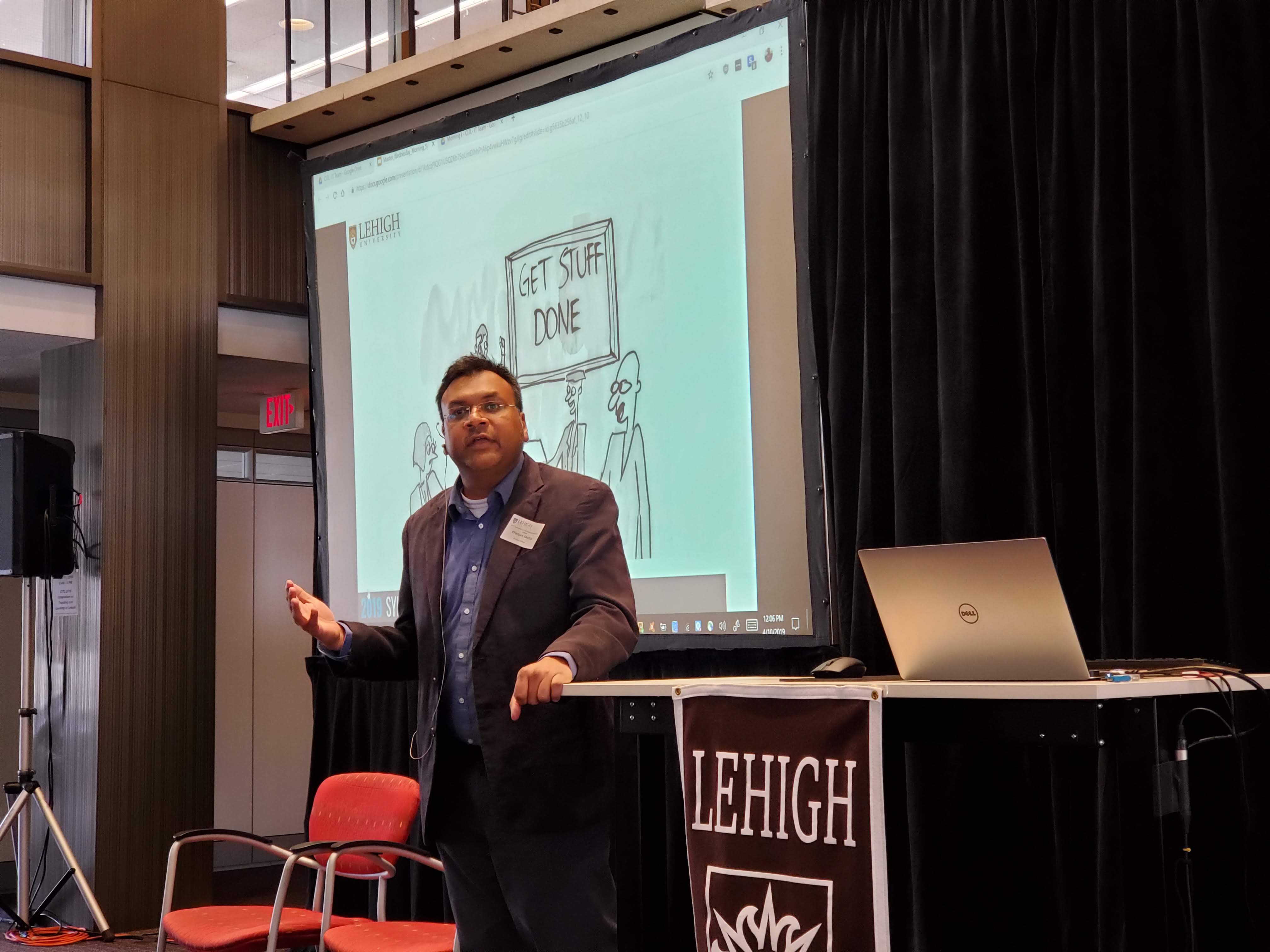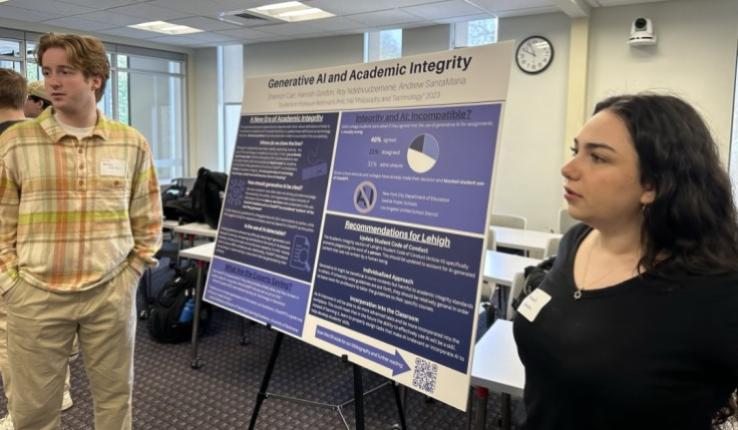The magnolia trees weren’t the only things blossoming across campus in early April. Innovation and collaboration were too, as new and effective classroom approaches were shared and discussed April 10-11 at Lehigh’s 12th annual Symposium on Teaching and Learning.
Hosted by the Center for Innovation in Teaching and Learning (CITL) in partnership with the Center for Community Engagement (CCE), the two-day symposium on the fifth floor of the Fairchild-Martindale Library featured nearly 50 presentations and four panel discussions covering a wide variety of disciplines and ranging from active learning, to collective learning, to virtual reality applications and innovative uses of classroom spaces. A total of 157 faculty, students and staff attended at least one session.
Presentations were split into two different formats: five-minute Lightning Round talks and 10-minute sessions.
Presentations on day one included classroom-related topics such as student engagement (Zach Zacharia, associate professor of supply chain management and director of the Center for Supply Chain Research) and interdisciplinary course development with CITL (Haiyan Jia, assistant professor of data journalism), as well as topics beyond the classroom, such as global projects that have social impact (Khanjan Mehta, vice provost of creative inquiry and director of the Mountaintop Initiative).






